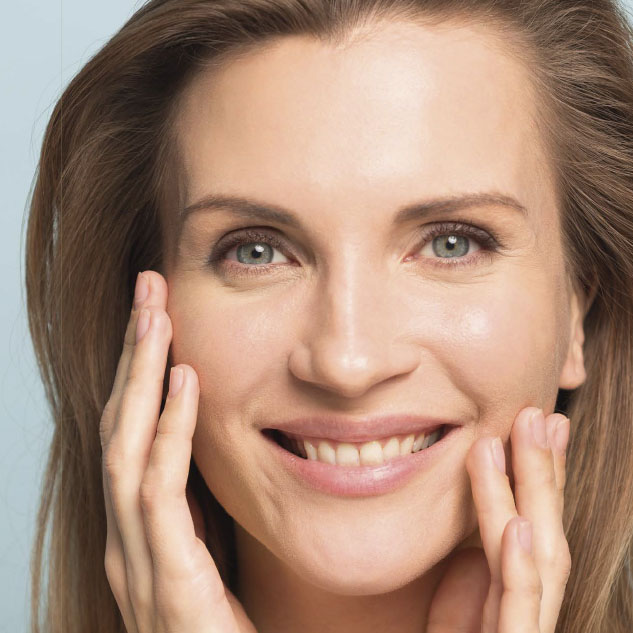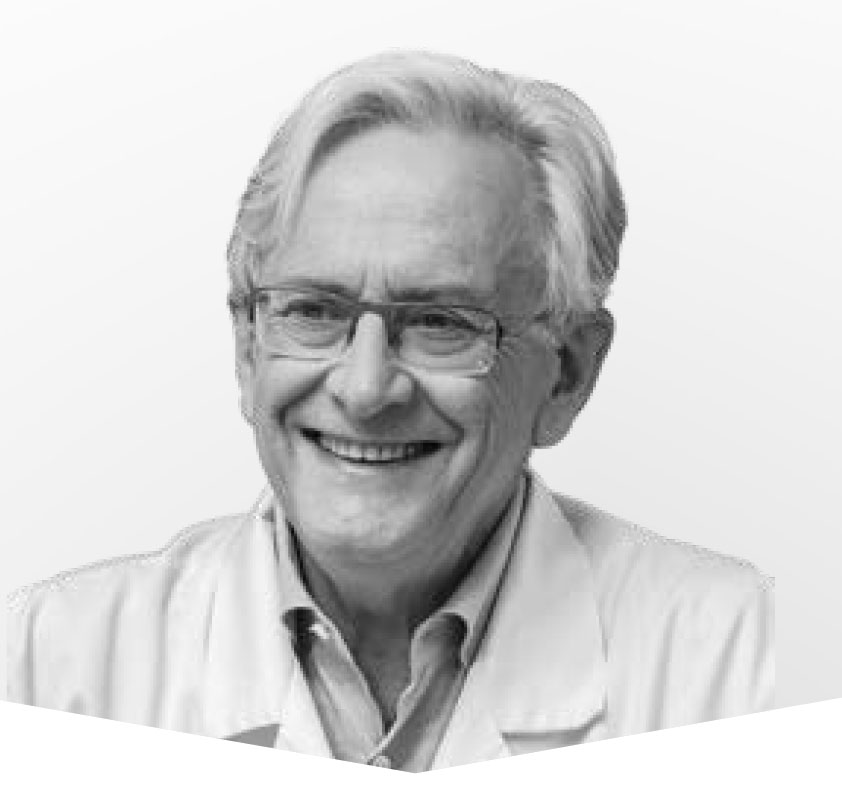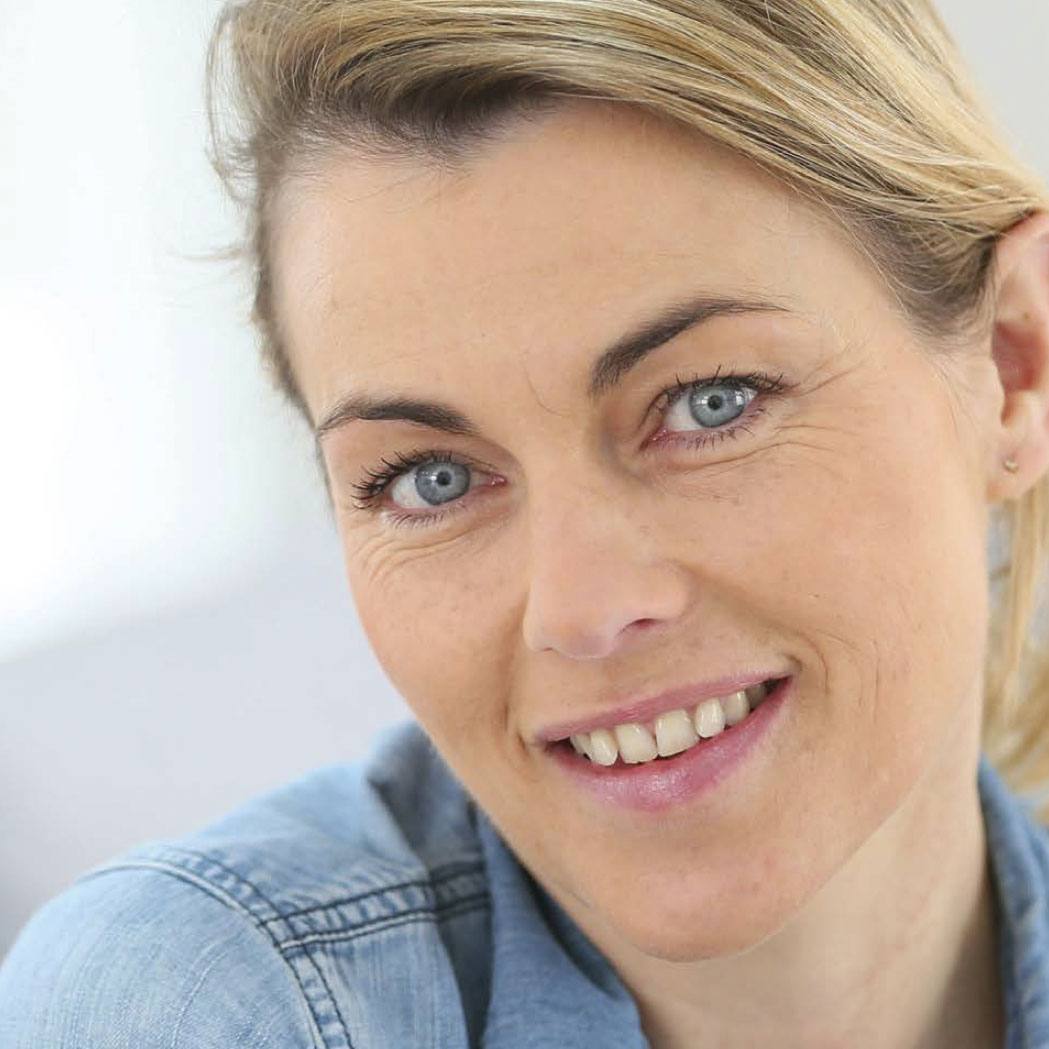Dr Pierre Nicolau
Cheeks that are lined or criss-crossed with moderate or deep wrinkles are seen as particularly unattractive because they alter the appearance of the face. Cheek wrinkles are one of the most visible signs of skin aging and often appear early on with regard to the patient’s actual age. Patients seek effective, safe and long-lasting treatments, and today we can effi ciently fulfill this request.
The causes of cheek wrinkles
Fine lines start to appear on the cheeks from age 35 or 38 and become more visible around age 42 to 45. In most cases, these wrinkles become much more pronounced around age 55. This wrinkling is caused by the premature aging of the skin’s superficial layers. It can be caused by genetic factors or extrinsic factors such as smoking and drinking alcohol, sun and UV exposure, which spell the end of fresh, youthful skin. The patients who come to see me often spend a lot of time outdoors, especially skiing, as the mountain environment is even more damaging than the seaside (where the added heat means you tend to keep your-self hydrated and protect your skin better).
This chronic lack of hydration combined with overexposure to UV rays leads to two concurrent factors: the skin starts to sag because it loses its structure, and the type I collagen – which maintains the skin’s structure and ensures proper cell function – disappears, which leads to wrinkles and a loss of elasticity.
We therefore need to recreate the patient’s original facial appearance, which has been lost due to age and external factors. Both skin sagging and cheek wrinkles should be treated in order to achieve a satisfactory, natural-looking result without creating volumes where there were none originally.
The temple area should not be neglected because, after age 50, it loses between 60 and 70% of its volume. The injections are performed deeply to avoid any risk of touching the blood vessels or nerves.
The versatility of collagen inducers
 I like to use Ellansé M for lost volumes and Ellansé S for pure collagen stimulation in the skin. In my experience, as well as in clinical studies and in histological data, this has proven to be the most stable product and has an excellent safety profile. Ellansé is a gel made from carboxymethylcellulose (CMC) and polyca-prolactone (PCL) microspheres, which are fully bioresorbable and biodegradable for a long-term effect.
I like to use Ellansé M for lost volumes and Ellansé S for pure collagen stimulation in the skin. In my experience, as well as in clinical studies and in histological data, this has proven to be the most stable product and has an excellent safety profile. Ellansé is a gel made from carboxymethylcellulose (CMC) and polyca-prolactone (PCL) microspheres, which are fully bioresorbable and biodegradable for a long-term effect.
These spheres are the smallest microspheres of resorbable products available. Smooth and regular, the microspheres do not change shape or volume before disappearing after around 24 months. To enable us to better visualise the product’s technology, imagine spaghetti in a sieve being cut into smaller and smaller pieces. It all stays in the sieve, until all the pieces become really tiny; the spheres then disappear by transforming into carbon dioxide and water. This is why they last so long compared with the other fillers on the market.
Furthermore, Ellansé recreate type I and III collagen which, in turn, regenerate the skin by restructuring it at cellular level.
Injection technique for a “smooth and lifted” appearance
I use a very fine cannula underneath the dermis, and I inject very small quantities using the retro-tracing technique. The idea is to inject fine lines of product in a fan shape in order to create a smooth and even coverage of the area. The entry points are made in front of the ear and behind the corner of the mouth so that the fan covers the whole surface of the cheek, which requires, on average, one syringe of product.
Next, we need to wait until new collagen is produced by the tissues, which takes 2 to 3 months. The results are visible immediately, right after treatment, thanks to the filling properties of the product, which immediately restores the volumes, and over the long term, by stimulating the patient’s natural collagen production. The results generally last around two years.
 Dr Pierre Nicolau: Plastic surgeon. Graduated from Montpellier Medical School. Consultant for the Paris Hospitals specialising in reparative surgery. Has practiced in his clinic in Figueres, Spain, since 2014. Teaches for 68 university courses and has written 70 articles in major scientific journals. Member of the SOFCPRE, SOFCEP, ISAP (in France) and the SECPRE and SEME (in Spain).
Dr Pierre Nicolau: Plastic surgeon. Graduated from Montpellier Medical School. Consultant for the Paris Hospitals specialising in reparative surgery. Has practiced in his clinic in Figueres, Spain, since 2014. Teaches for 68 university courses and has written 70 articles in major scientific journals. Member of the SOFCPRE, SOFCEP, ISAP (in France) and the SECPRE and SEME (in Spain).
More informations: dr-nicolau.com/en/home/















